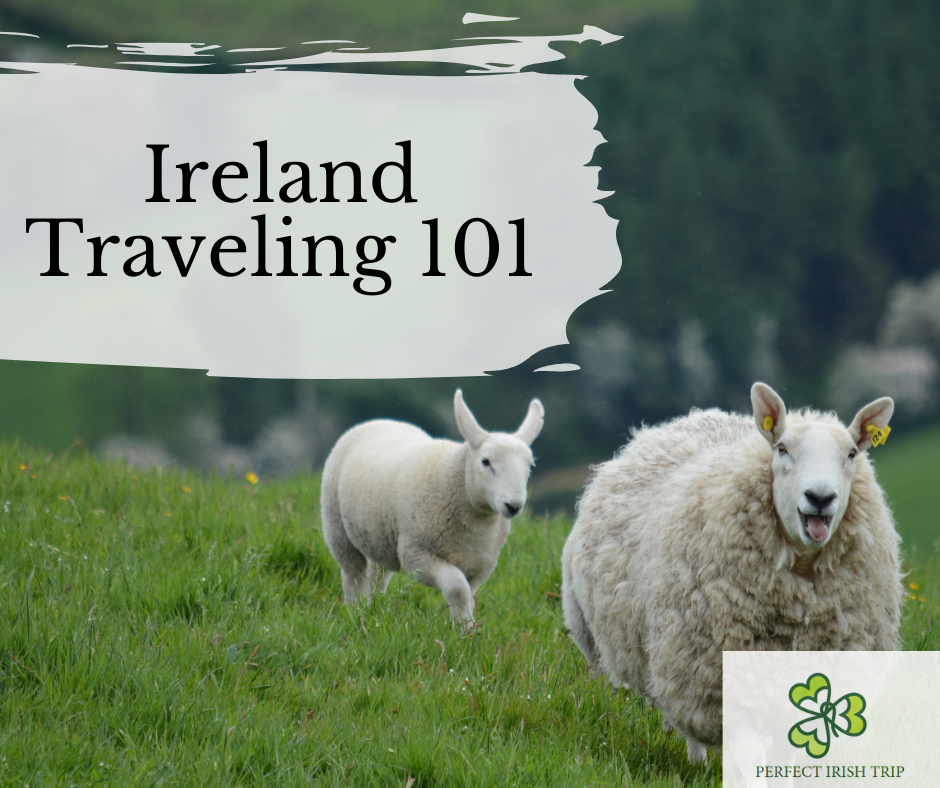
1. What plugs to use.
For Ireland the associated plug type is G, which is the plug that has three rectangular pins in a triangular pattern.
2. What side of the road to drive on.
In Ireland drivers drive on the left side of the road. If you plan on ranting a car we recommend Hertz or Budget. If you are worried about driving on the opposite side of the road to what you are used to, we recommend getting an automatic car and/ or co-sharing the driving journey. If you are traveling Europe, other countries where you will drive on the left hand side of the road are – The UK (Britain, Scotland and Whales), Malta and Cyprus.
3. What currency is used.
The euro is used in Ireland and throughout Europe, which is great if you are visiting from Europe or if you are doing a tour across Europe, you will not need to keep switching currencies.
4. Irish weather and temperature.
Ireland reads the temperature gauge in degrees celsius. You can have 4 seasons in one day in Ireland. Irish people can have problems preparing for their day as they might dress in the morning for a sunny day, then by lunch time it’s lashing rain and they have dressed in sandals and shorts. During the summer months the weather is warmer, sunnier and mild. You can expect temperatures to reach between 16-20°C (60.8 – 68℉) and on average expect 10-14 days of rainfall during each summer month and showers in-between. The best advice is to dress is to pack light clothes, but also good rain coat and bring shoes you are happy to walk in the rain with as backup in your case.
- During autumn months the temperature goes between 5-17℃ (41-63℉) and rainfall is expected on average of 16-20 days.
- During winter months the temperature goes between 2-10℃ (36-50℉) and rainfall is expected on average of 13-20 days.
- During spring months the temperature goes between 5-15℃ (41-59℉) and rainfall is expected on average of 10-17 days.
5. Emergency numbers.
In Ireland, if you find yourself in an emergency situation, you can call 112 or 999. You will be put through to an operator who will then help direct you to the appropriate line for either -the Garda Síochána (Irish Police), ambulance, fire and Irish Coast Guard. If you are travelling throughout Europe 112 is an emergency number you can use throughout.
6. National language.
Irish is the national language of Ireland, although everyone speaks English. Most people however might have a few basic cúpla focal (a few words), as Irish is thought as part of the secondary school curriculum, but most people forget the language as they do not use it. Some people attend all Irish speaking schools and have more than a few words and tend to keep the language and then in rural parts of Ireland, we have what is called ‘Gaeltacht Areas’, which are regions where only Irish is spoken. In these Gaeltacht areas, all signs are written in Irish, all the shops and cafes you visit will have Irish speaking workers to help you and all homes will have Irish speaking families in them. If you would like to visit a Gaeltacht area, we recommend you read this article.
7. Population of Ireland.
The estimated population of Ireland is roughly about 4.85 million people. A-lot to fit on one small green island.
8. The capital of Ireland.
Dublin is the capital city of Ireland. Dublin (or Baile Átha Cliath in Irish) has a population of over 565,000. Some of the most recommended things to see and do in Dublin are; To visit the Guinness Storehouse, Do a Viking Splash tour and visit Kilmainham Gaol.
9. Irish Timezone.
Ireland operates under the same timezone as the UK – April until October GMT and November until March GMT+1.
10. Do you need a visa to enter Ireland?
The short and simple answer, no, not if you are a visitor from the EEA (and including British dependent territories). To check if you need a visa, what type of visa you need and what documentation you need click here.